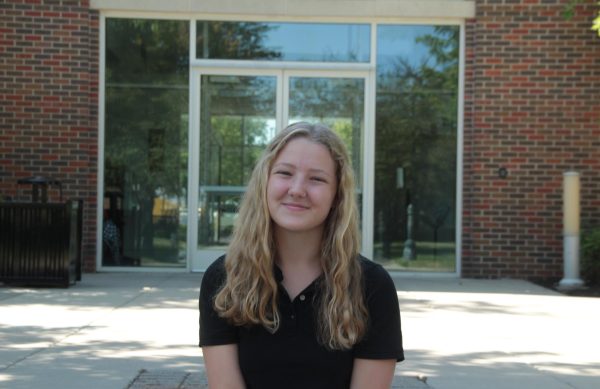The US HIV/AIDS crisis is not yet in our past
While we generally think that the HIV/AIDS Crisis was left in the 20th Century, the disease is still affecting over a million today.
September 19, 2018
In June of 1971, the AIDS crisis began in the United States. Over the course of the next few decades, 700,000 people, according to the Henry J. Kaiser Family Foundation, became infected with HIV which eventually developed AIDS, the sets of illnesses and symptoms that develop once the immune system has been irreparably damaged by HIV. Once HIV treatments were introduced in 1996, the issue was pushed into the shadows.
As a nation, we often wish to push events further into our historical past. We’re more comfortable with the black and white photos of wars and protests than the jarring color photos of our more recent past. The more distance we can put between a tragic event and ourselves, the better. But what do we do when the events aren’t as distant as we’ve led ourselves to believe?
This is the case of the AIDS crisis. Its death toll peaked over two decades ago, in 1995, but the reality of the situation is that the AIDS epidemic is ongoing for those who cannot afford HIV treatment.
Now, there are 1.1 million people living with HIV in the U.S., according to a Greater Than Aids press release. Treatments such as Antiretroviral (ARV) therapy, which relies on customized daily dosages based on the patient’s viral load, have greatly reduced the risk of the disease developing into AIDS. However, they can cost between $11,045-$22,626 a year per patient, according to a 2006 Johns Hopkins study. Unfortunately, HIV is often considered a pre-existing condition and is not eligible for coverage under certain health care.
Today, 1 million people in the U.S. live with HIV. A disproportionate amount of these people are racial and ethnic minorities. according to a Greater Than Aids study, while black men make up 12 percent of the U.S. population, they comprise 45 percent of those diagnosed with HIV.
Lack of awareness and education leads people, specifically young men, to live with HIV unnoticed until it develops into AIDS. An estimated 14 percent of people living with HIV are unaware that they are carrying the disease. This lack of awareness also leads to dwindling amounts of donations to HIV/AIDS relief funds, which are vital to those who cannot afford life-saving treatment.
Young adults are generations removed from what the public considers to be the AIDS epidemic. Of those surveyed in the Greater Than Aids study, 64 percent have never known anyone who lived with or died of HIV. The survey also makes clear a severe misunderstanding of how the disease is transmitted. The study shows some people ages 18-30 thought the disease could be transmitted through a toilet seat, dishes, spitting and kissing. This mindset stigmatizes the disease and makes it more of an irrational fear than a health issue.
Today, we sparingly remember those who died of AIDS in the form of memorials and, in one case, a memorial quilt. We are too hasty to push the epidemic into the past, rather than continue education about how it is transmitted and can be prevented, especially within the at-risk age group of 18-30 year olds.
While the current high school generation did not live through what is known as the AIDS crisis and might not know anyone who was personally affected, it is our responsibility to continually bring awareness to this disease. In our community, there are opportunities to be involved with this issue such as the AIDS Walk April 28, which raises money for housing and treatment for those living with HIV and AIDS.
In order to best honor the lives of those in America who have already died of AIDS, and to assist those who are still living with HIV, we need to bring awareness to the lingering issue by starting conversations and educating the public about the impact of HIV.












